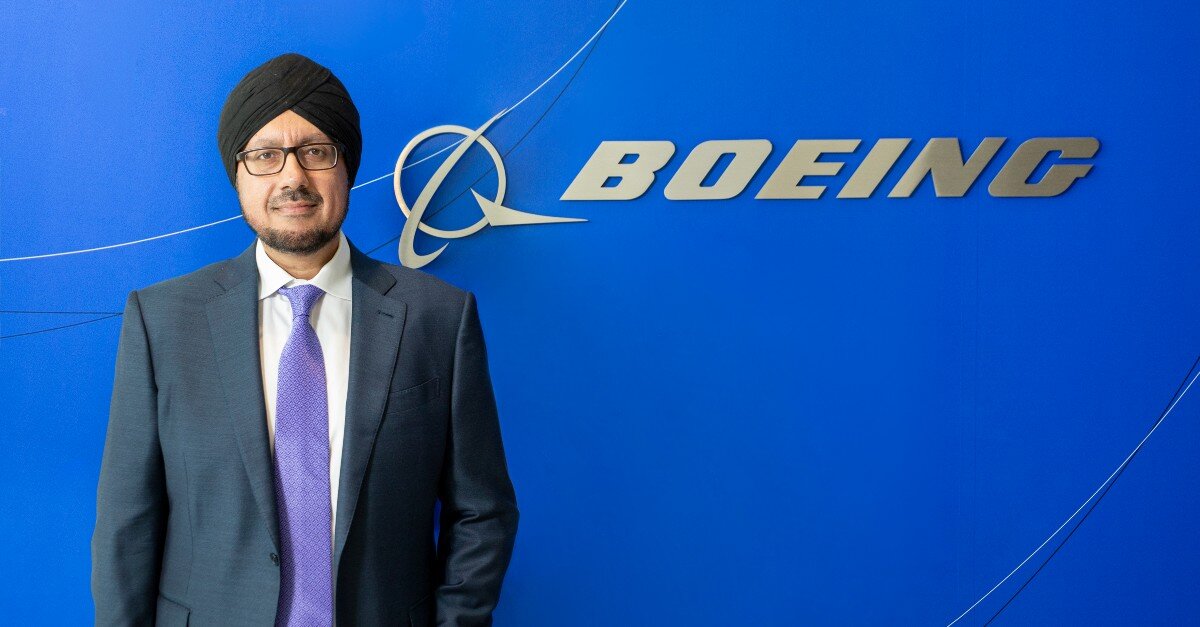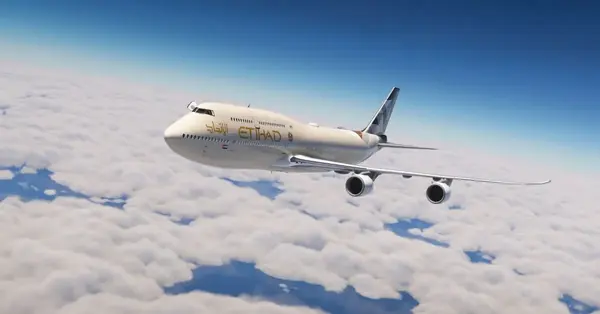You are viewing 2 of your 2 free articles
Interview: Boeing's Kuljit Ghata-Aura on the future of aviation
As Boeing's president for Middle East, Africa and Turkey, Kuljit Ghata-Aura's is focused on the creation and implementation of regional strategy, including government affairs, new partnership opportunities and corporate citizenship projects. In addition, he's charged with expanding Boeing's presence and strengthening company relationships with customers and stakeholders. A British citizen, born in Uganda, he studied at Oxford University and practiced law in London, the United States and the Middle East before joining Boeing. Here, he talks to Connecting Travel about the future of aviation, which he says will see Wisk air taxis and sustainable aviation fuel contribute to the reduction of carbon emissions.
CONNECTING TRAVEL: Boeing has made a US$450 million investment in Wisk to advance certified autonomous electric flight in pilotless flying taxis. Can you tell us more about that?
KULJIT GHATA-AURA: Wisk is an advanced air mobility (AAM) company dedicated to delivering safe, everyday flight for everyone. Wisk's self-flying, eVTOL (electric vertical takeoff and landing) air taxi will make it possible for passengers to skip the traffic and get to their destination faster. Based in the San Francisco Bay Area and New Zealand, Wisk is an independent company backed by The Boeing Company and Kitty Hawk Corporation. With more than a decade of experience and 1,500 test flights, Wisk is shaping the future of daily commutes and urban travel, safely and sustainably.
CT: Can you paint us a detailed picture of what Wisk self-flying air taxis will look like?
KG: The product is called Cora, it's an all-electric Air Taxi that can carry two passengers and does not need a runway, it can take off and land like a helicopter. Cora flies approximately 1,500 to 5,000 feet above ground; it's around 21 feet long with a 36 foot wingspan. In terms of range and speed, its can travel up to 40km plus reserves, with speeds of 160km per hour. You can find all the information along with videos online on the Boeing website.
GET YOUR FREE 48-PAGE GCC TRAVEL & HOSPITALITY REPORT HERE
CT: Will Wisk air taxis be available in our lifetime?
KG: It's still a prototype; the first-ever candidate for certification of an autonomous, all-electric, passenger-carrying aircraft in the US. Our funding will also support Wisk as it enters an intensive growth phase over the next year, its preparations for the launch of scale manufacturing and the company's go-to-market efforts.
Electric and hybrid-electric propulsion systems for commercial aircraft application is one of several important areas of our current research efforts. We have built and flown a number of small demonstrator aircraft to better understand scalability and future potential. Electric and hybrid-electric propulsion will likely become viable for small aircraft first and could transition to longer ranges and higher payloads as the technology matures. Our joint work focuses on batteries, fuel cells, power inverters and other components for more electric subsystems and eventually primary aircraft propulsion. We have a sharp focus on ensuring any new developments provide safe and efficient solutions.
CT: Is the region's growing cruise industry and planned rail network expected to impact demand for flights in future?
KG: I don't believe so – not in the next 20 years. The Middle East region's role as a global connecting hub continues to be important for developing markets to and from Southeast Asia, China and Africa. According to our latest 2021 Commercial Market Outlook for the region, Middle East passenger traffic (4.1% compared to 4.0% global) and the region's commercial fleet (4.1% compared to 3.1% global) are projected to more than double over the 20-year forecast period. Furthermore, airlines in the Middle East will require 3,000 new airplanes by 2040.
CT: How is Boeing supporting and aligning with the aviation industry goal to achieve net zero carbon emissions by 2050?
KG: Boeing has a multi-faceted strategy that allows our industry to decarbonise aerospace while ensuring the connectivity, societal and economic benefits that come from air travel are available to people everywhere. This includes Network Operational Efficiency (including air traffic management), fleet renewal and the use of Sustainable Aviation Fuels (SAF).
Sustainable fuels are the key to long-term, large-scale CO2 emission reductions that airplane technology alone cannot achieve, and SAF offers the best potential to significantly reduce emissions on larger, longer-range airplanes for many decades to come.
As well as building new generations of aircraft, we've made substantial progress in reducing greenhouse gas emissions from our worksites and manufacturing facilities. Boeing operations achieved net-zero emissions at manufacturing and worksites in 2020 by expanding conservation and renewable energy use while tapping responsible offsets for the remaining greenhouse gas emissions.
CT:What are Boeing's plans for SAF usage?
KG: SAF, made from renewable biomass and waste resources, has the potential to deliver the performance of petroleum-based jet fuel but with a fraction of its carbon footprint, giving airlines solid footing for decoupling greenhouse gas emissions from flight. Boeing is working closely with government and private industry stakeholders to develop a comprehensive strategy for the scale-up of production and use of SAF.
For more than a decade, Boeing has collaborated globally with airlines, governments, research institutions, SAF companies and other stakeholders to develop and approve SAF pathways. In February 2022, Boeing announced a supply agreement for two million gallons (7.5 million litres) of blended SAF with EPIC Fuels to power its commercial airplane operations in South Carolina and Washington state in 2022. The agreement is the largest announced SAF procurement by an airframer.
CT: Can you give examples of how Network Operational Efficiency can help achieve net zero carbon emissions by 2050?
KG: The aviation industry continues to collaborate on how to operate and fly more efficiently (including air traffic management), which collectively can reduce emissions by 12%. Boeing works with airlines, government customers, air navigation service providers and airports on efficiency improvements. These include procedures such as continuous descent approaches and equipment upgrades such as GPS-based navigation for more direct routings. We also develop services to leverage data for fuel efficiency, help customers optimise flight planning, and provide pilots with real-time weather and traffic information.
CT: What changes are being made in new aircraft to reduce emissions?
KG: New airplanes provide significant efficiency gains, and the airplanes that we deliver this year will be as much as 25 to 40% more fuel-efficient than the airplanes they're replacing. The next generation of aircraft will incorporate the latest digital design, test and production tools, airframe, propulsion and systems technology, and different power solutions will apply to different market segments and aircraft sizes, all contributing to a more sustainable future. Fully deploying the latest generation airplanes is the most significant contribution to carbon emissions reduction available over the next decade.
RELATED:
Interview: Grant Marais on joining the Gates Hospitality team
Interview: Marriott's Michel Nader on creative digital solutions for the F&B industry
Interview: Sami Matta on making a hotel a dining destination
CT: Is the disposal of old aircraft within the goals of sustainability?
KG: Boeing is committed to improving the environmental performance of the airplanes it designs and manufactures, including the pursuit of aircraft life cycle improvements. The design of Boeing's commercial airplane enables parts disassembly and materials recovery. As a result, Boeing airplanes are nearly 90% reusable or recyclable by weight.
Recertified parts from retired airplanes help customers reduce the cost of repairs while offering cost-efficient quality solutions. Boeing Global Services provides access to this inventory, called used serviceable material, or USM. Boeing re-certifies the parts, ensuring quality. Materials have been harvested from retired Boeing airplanes, including the 767 and 737, as well as non-Boeing-manufactured aircraft.
Boeing is a founding member of the Aircraft Fleet Recycling Association, the leading global organisation for developing and promoting the safe and sustainable management of component and aircraft circularity in the aviation sector, and one dismantled airplane can provide up to 6,000 parts.

















